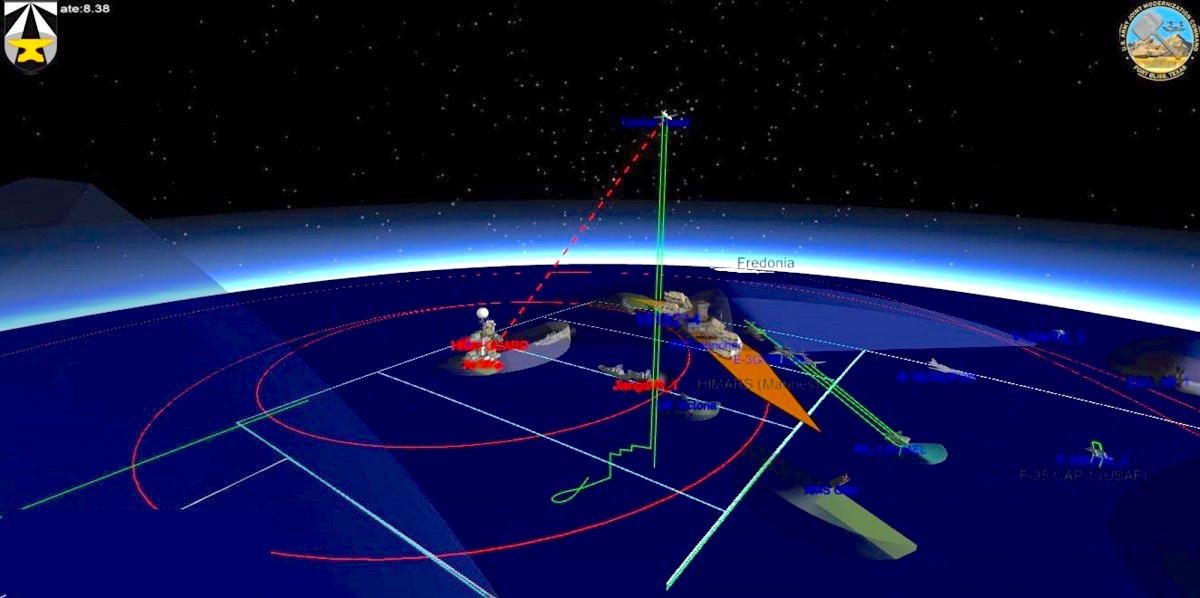New Combat Systems Set to Conquer the Future with New Connectivity Options
New battlefield strategies that network dismounted soldiers for “any-sensor, any-shooter” tactics are driving technological changes in digital gear enabled in part by advanced interconnects.
By Matt McAlonis, Engineering Fellow, Aerospace Defense and Marine, TE Connectivity, and Franck Kolczak, Senior Business Development Manager-Defense Market, TE Connectivity combat
Today’s entertaining real-time-strategy (RTS) games and virtual-reality (VR) headsets are being transformed into serious combat systems for the real world. All four U.S. military services have embarked on a joint warfighting concept called Joint All-Domain Command and Control (JADC2) that is taking advantage of rapid developments in digital technologies.
Connecting Multi-Domain Combat Operations
The connectivity challenges in implementing the JADC2 concept are immense. JADC2 aims to network every soldier, intelligent device, and weapons platform from all domains: air, land, sea, space, and cyberspace. The goal is to enable a distributed command that fulfills mission goals using any available resource, anywhere. For example, the U.S. Army is training soldiers with helmet-mounted heads-up displays (HUDs) that use augmented reality to sharpen their situational awareness. A militarized version of commercially used mixed-reality smart glasses, these headsets provide an Integrated Visual Augmentation System (IVAS) that displays thermal and 3-D images, directional compass waypoints, and weapon crosshairs — all while letting the soldier see terrain through the lens without smartphone-type distractions.
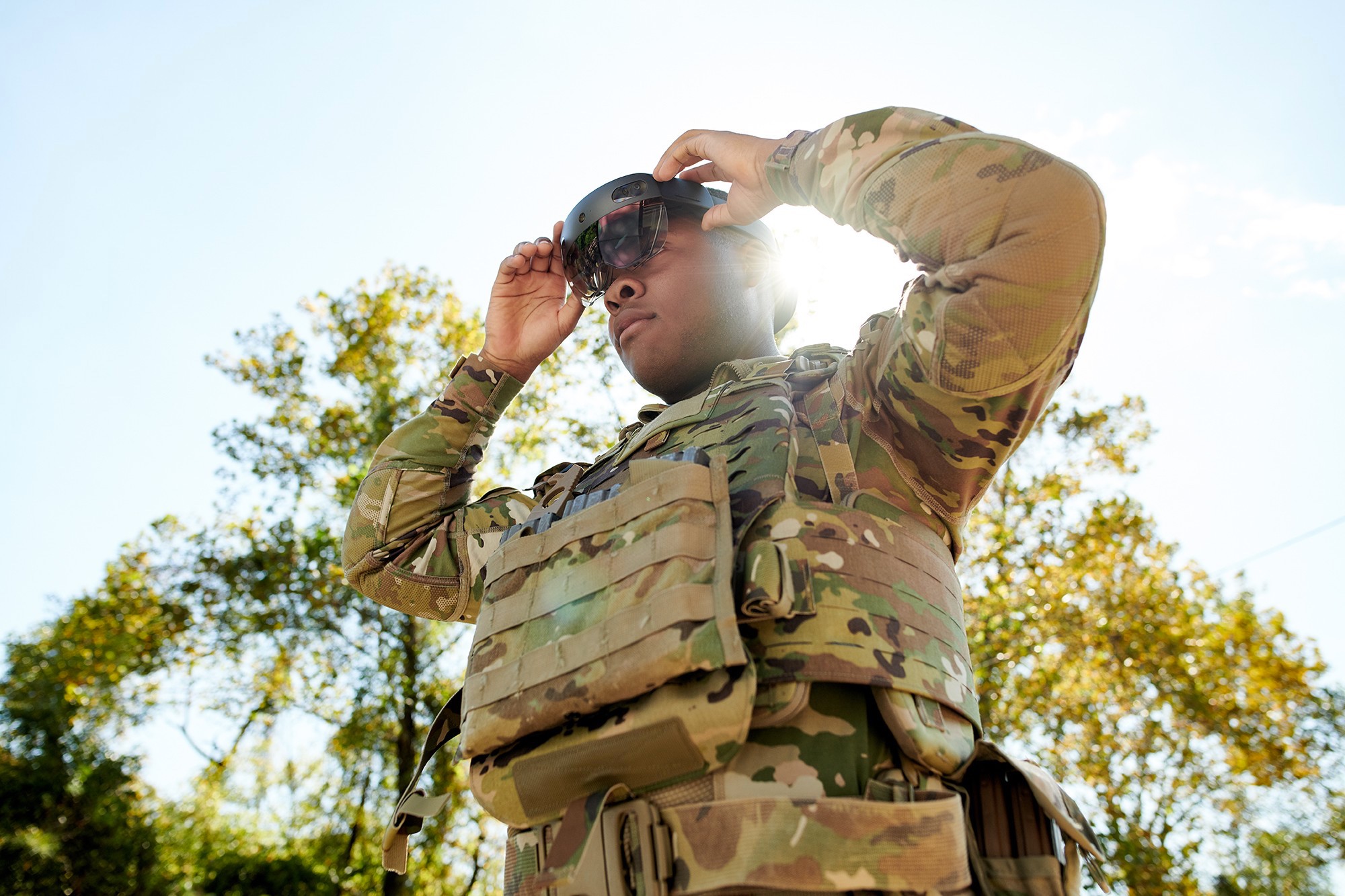
In November 2019, soldiers at Fort Pickett in Virginia tested a Microsoft-designed prototype goggle, the Integrated Visual Augmentation System (IVAS), that offers the capabilities they need to regain and maintain overmatch in multi-domain operations on battlefields that are increasingly urban, congested, dark, and unpredictable.
Imagine being on the battlefield and flipping down a transparent screen from your helmet, scanning the landscape to identify friend or foe. And it’s not just identification and location: The visual scan also determines the health and readiness status of the squad. Biometric sensors embedded in the uniform and other wearables gear can detect much more than just vital signs. Commanders located on the battlefield or remotely can obtain a wealth of soldier information, including the amount of rest/sleep, hydration, focus, alertness, blood sugar, metabolic status and energy reserve, altitude adaption, ammunition amount, battery levels, and even potential exposure to toxic chemicals and materials. Algorithms can take data from the environment coupled with data from biometric sensors and extrapolate the need for supplies and other reinforcement criteria.
Also known as HUD 3.0, IVAS also benefits the larger battlefield by supplying tactical information, such as recognizing an enemy aircraft missile launcher and then transmitting coordinates to the network so friendly assets can quickly destroy it.
Every Soldier is a Sensor
Commercial off-the-shelf (COTS) products are typically not designed for rugged environments or for demanding application size, weight, and power (SWAP) requirements, and thus cannot meet the connectivity challenges of these new applications. To function as an integrated combat platform, IVAS will utilize the U.S. Army’s new Adaptive Squad Architecture (ASA). Not an open architecture, ASA specifies how components interconnect in a network where large scale, very secure data exchange is used to prevent enemy access. Supporting “any sensor, any shooter” network communications, ASA also aims to optimize the SWAP of soldier gear, which often tips the scales at over 120 pounds. To inform data-driven decisions at mission speed, several cloud-based infrastructures are in the works, such as the proposed Joint Enterprise Defense Infrastructure (JEDI) and the U.S. Air Force’s Cloud One enterprise cloud solution.
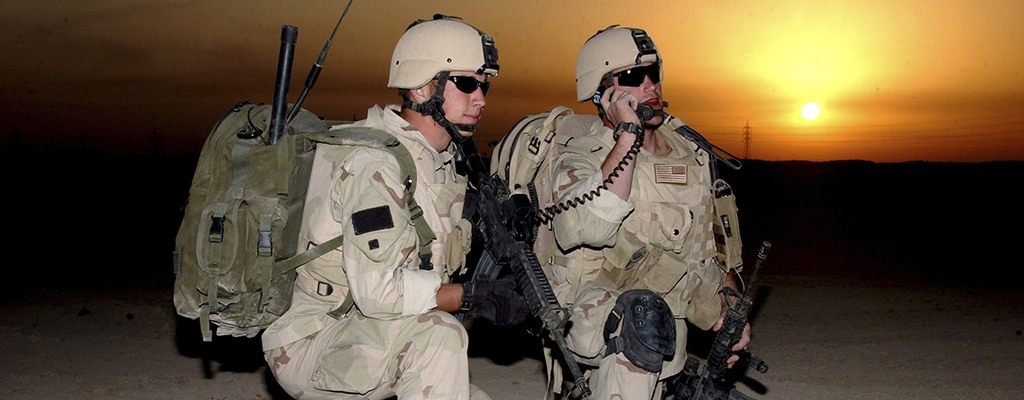
Connecting with a Department of Defense (DoD) cloud for data analytics using artificial intelligence (AI) and machine learning (ML) can provide real-time answers to questions such as, Where is the adversary? Where are my troops? Are my troops prepared to engage with adequate armaments and supplies?
Connectivity Ready for New Combat Systems
JADC2, JEDI, and IVAS all create significant bandwidth and SWaP challenges that are driving major improvements in connectivity products. Batteries, cables, and devices must all interconnect with other soldier components. That includes the increasing number of sensors and computing devices embedded in soldier gear that function in an Internet of Military Things (IoMT) or Internet of Battlefield Things (IoBT). From pedometers in boots to heart-rate sensors in chest armor, the sensors and computing devices worn by soldiers can supply valuable context-aware biometrics about a soldier’s physical condition. Yet, the sheer complexity of enabling individual, squad, command, and cloud connectivity during combat presents daunting challenges to the military electronics designer.
To support these advanced applications and enhance the next generation of battlefield technologies, a host of advanced antennas, sensors, interconnect, wire and cable, and harnessing accessories are now available. To start with, consider the connectivity components used at the physical layer of the data transmission link.
For instance, O.C.H. Micro Circular Connectors from TE Connectivity (TE) address a host of connectivity challenges, whether the electronic devices are worn on a human or fastened on a vehicle. Originally developed for the U.S. Army’s Nett Warrior program, these small, lightweight connectors were designed for future soldier gear, including soldier vest cables, batteries, antennas, communication systems, power hubs, radios, and military vehicles.
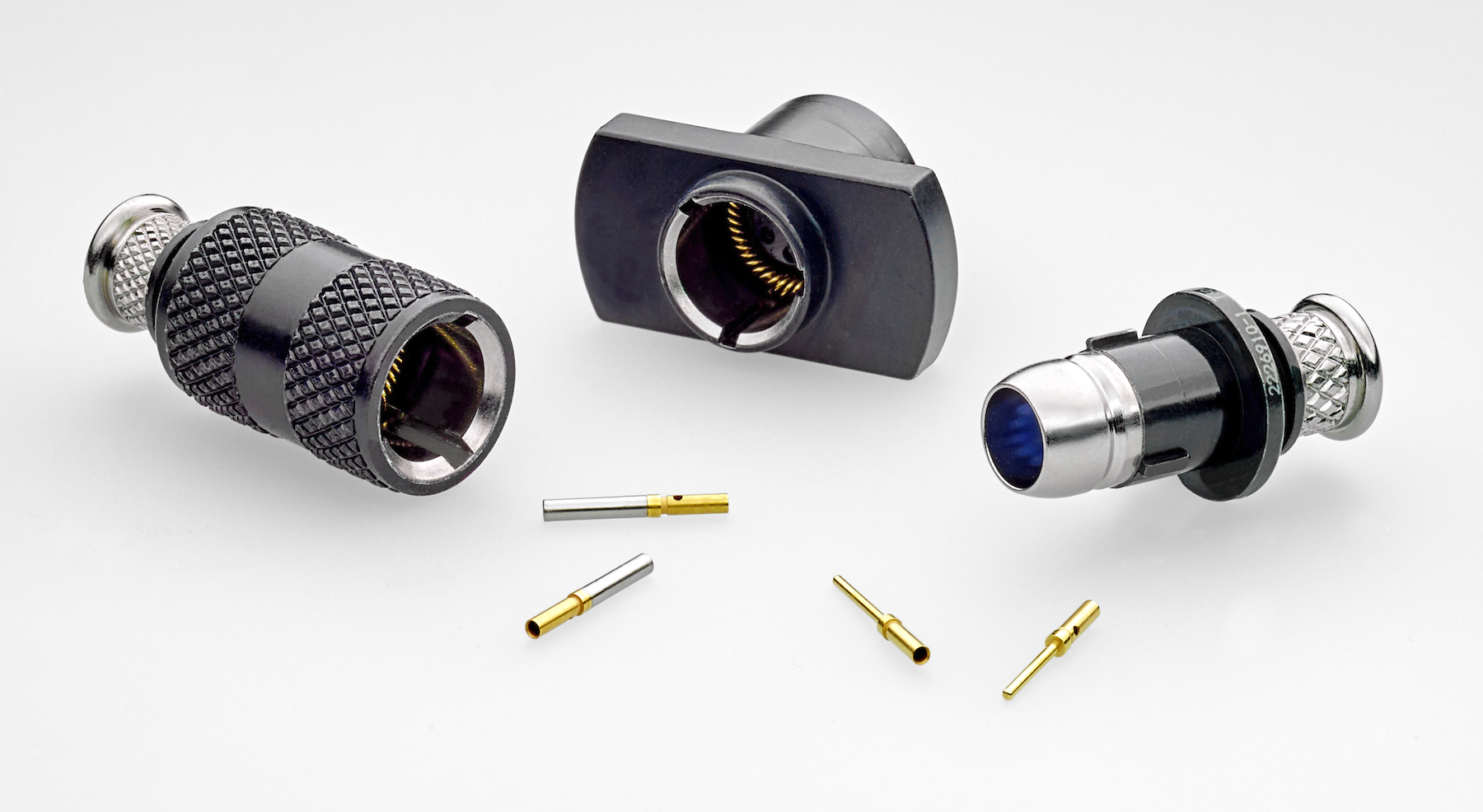
Compact O.C.H. Micro Circular Connectors by TE Connectivity.
The ruggedized design employs a push-pull breakaway coupling mechanism that enables quick connections and single-action disconnections. O.C.H. Micro Circular Connectors meet the rigorous mechanical and performance requirements of MIL-STD-810G. Robust aluminum shells are available with both all-over electroless nickel plating and selective anti-reflective black zinc/nickel plating, thermoplastic inserts, six or seven gold-over-nickel-plated copper alloy contacts, and multiple keying options to ensure proper mating in demanding battlefield environments. Moreover, the aluminum shell and thermoplastic insert provides a small, lightweight package for soldier-worn gear. Connectors are rated for operating temperatures extending from -18°C to +71°C when crimped to a 22AWG wire and are also resistant to shock and vibration and intermateable with many other Nett Warrior products.
Reducing Cable Bulk by Over Half with Single-Pair Ethernet
High-speed data link cables for combat systems must transmit signals and data with high fidelity, supply power to connected devices, and withstand harsh environments. Of course, Ethernet protocol makes it easy to route data with nearly everything, everywhere. But for soldier gear, bulky eight-wire Category 6 cables are out of the question. Fortunately, the Ethernet physical layer (PHY) can use two wires in a single-pair Ethernet (SPE) configuration, commonly known as 100BASE-T1. Robust SPE cable is being positioned as a platform for the Industrial Internet of Things (IIoT). To meet aviation electronics reliability requirements, TE recently introduced the Mini-ETH SPE system that references the soon-to-be issued ARINC 854 standard. Using only one pair of wire, Mini-ETH assemblies offer substantial size, weight, and cost savings over traditional custom designs using three or four pairs of wire per Ethernet cable.
Mini-ETH cable is qualified for 200MHz and 100Mb/s operation at 15m (49ft) link lengths. In addition, TE has a roadmap to support 1Gb/s and 10Gb/s data speeds at 40m (131ft) link lengths and frequencies over 750MHz, as well as new connector designs to support higher frequencies and speeds. A Power-over-Data-Line (PoDL) version is also planned.
Originally introduced for screens, sensors, data hubs, and other electronics on aircraft, compact Mini-ETH cables and connectors are also candidates for new combat systems where size and weight reductions can be beneficial.
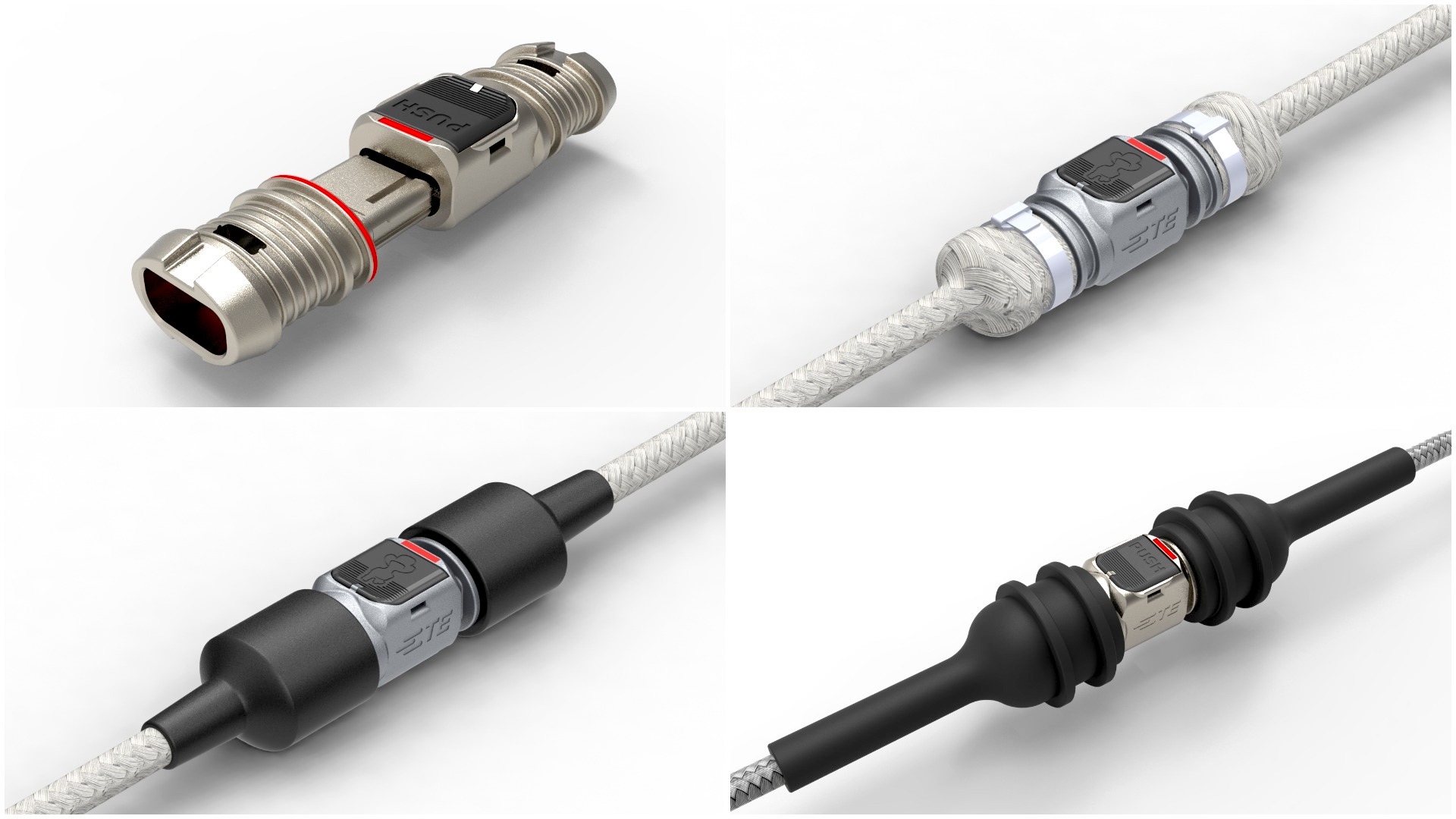
TE Connectivity’s Mini-ETH Single-Pair Ethernet solutions can use shielded 369 Series Connectors with up to 37% smaller cross-sectional area compared to traditional micro circular connectors. Top Left: A durable, unibody 369 Series shell. Top Right: A Mini-ETH assembly with metal braid terminations. Bottom Left: A Mini-ETH assembly with sealing boots. Bottom Right: An overmolded Mini-ETH cable assembly.
For back-end military and defense applications such as missile warning, radio communication, remote weapon, and fire control systems, a new Category 7 Ethernet cable has been developed, offering 100Gb/s speeds over 15m (49ft) links and reverting to 10Gb/s at longer distances. TE Raychem Cat 7 cables are individually-shielded, four-pair cables that comply with IEC 61156-6 requirements and use 26 AWG wire as required in certain military and aerospace applications.
Preparing for the Future Starts Today
In today’s and tomorrow’s world, dismounted soldiers in the field rely upon instant informational superiority on the battlefield. The connectors, cables, and accessories for these soldier systems are available and in production now. Experienced manufacturers can also engineer products that meet evolving needs and assist the defense industry to develop solutions that will conquer both current and future challenges.
Learn more about TE Connectivity’s soldier systems and wearables.
Like this article? Check out our other New Technology, sensors, and ruggedized articles, our Military/Aerospace and Wire and Cable Assemblies Market Pages, and our 2020 and 2019 Article Archives.
